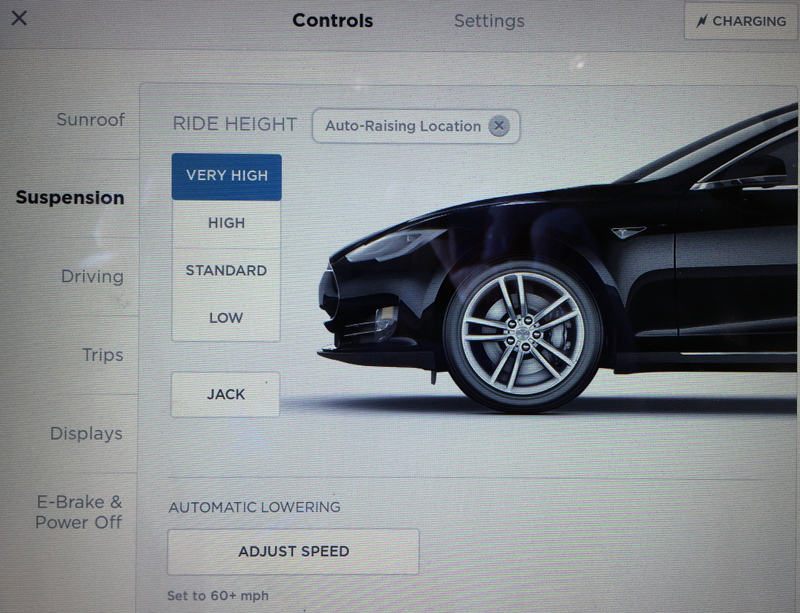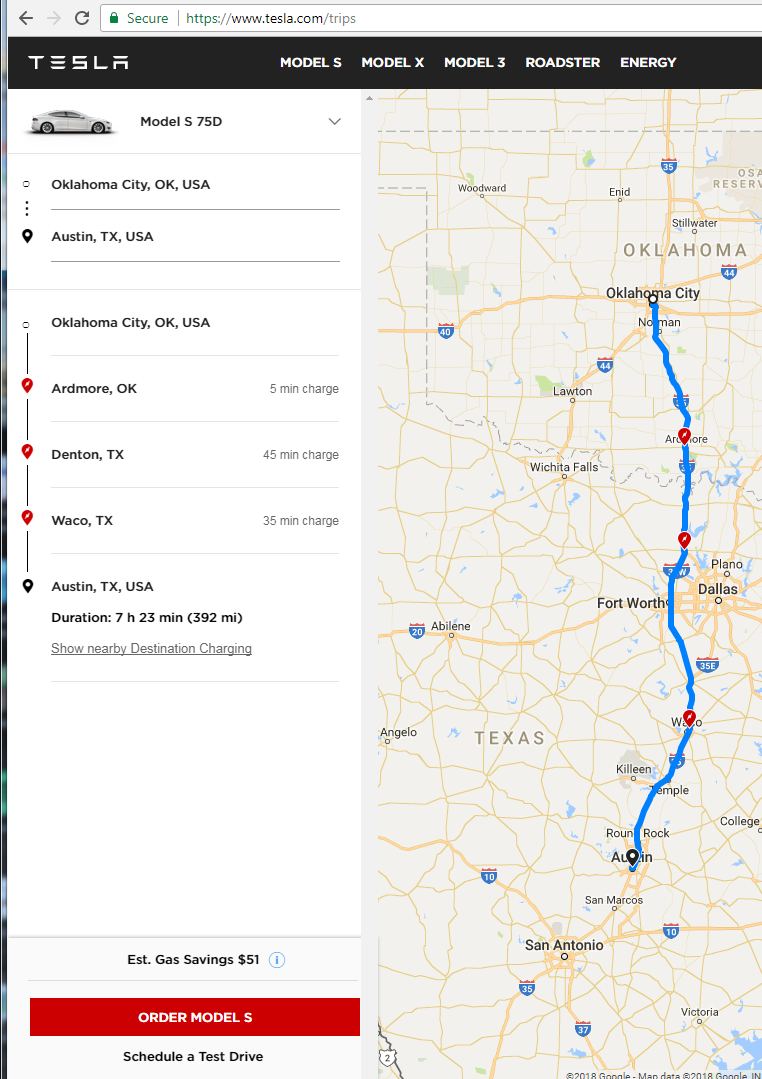One of the benefits of owning an EV is an absence of the regular maintenance (such as oil changes). I haven’t had a need to bring my car for a service since I bought it. My tires, though, were overdue for rotation. Having a list of small issues to be addressed that I accumulated since the purchase (mostly minor inconveniences), I decided to make my first appointment at the Tesla Service Center nearby. One of the items on the list required an overnight stay (a missing part), so I was greeted with another Model S as a loaner vehicle:

Yup. A nicely equipped pre-facelift P85D, featuring dual motor and Insane performance mode. I was quietly hoping to put my hands on Model X (so I could compare the features/functionality to Model S), but I won’t complain in this case!
I’ll jump to the “insanity” part in a bit, but first a brief comparison to the “base” model 75:
| Model S 75 | Model S P85D | |
| Drive | Single motor, RWD | Dual motor, AWD |
| Battery capacity | 75 kWh | 85 kWh |
| Horsepower | 382* | 691 combined (470 rear + 221 front) |
| Acceleration (0-60 mph) | 5.2s* | 3.2s |
| Autopilot hardware | 2.0 | 1.0 |
* – Model S75 built prior to June 2017, when Tesla introduced a more powerful motor. Newer cars are faster from 0-60 by almost a full second (4.3s).
Among other differences between the two, P85D comes with air suspension, next gen seats and Bi-Xenon headlights.
As far as ride quality/comfort, my non-scientific and time-limited test would conclude that air suspension has a slight advantage over coils (that my car is equipped with). It feels like vibrations from the road are dampened a bit better, but it might as well be the difference in tire type and pressure. I find the level of comfort on standard coils as adequate, but that’s just me.
The cool thing about the air suspension though is that you can adjust the ride height to accommodate things like speed bumps or steep driveways. The latter scenario paired with geofencing helps to remember commonly visited locations (such as your house) – the car will automatically adjust the suspension to previous setting.

The next gen seats on the P85D felt definitely less comfortable than the premium seats on mine. It almost felt like there was not enough padding on bottom and back of the seat, making the ride somewhat a pain (literally). Again, this is just my take on it. Everyone’s body is different. I am also missing the adjustable headrest, but that’s just being picky.
Xenon headlights have a nice, even spread/cut off of the light beam, but the newer LED headlights are definitely brighter.
Other than these, the cars offer very similar experience when it comes to comfort and functionality.
So, now that the boring stuff is out of the way, how about that insane mode?

Does it live up to the name? You betcha. My S75 has already plenty of oomph to push you back into the seat, but this… it takes it to another level! While in the driver’s seat you are prepared for what’s coming when you floor it, but there’s no way the passengers can anticipate the instant G-force and rapid acceleration that’s about to ensue. Paired up with the excellent traction control and all-wheel drive the car feels solidly planted and quickly corrects its path should you go over slippery spot on the road. The best part, you have access to this power at any speed. Just press and go! The best compliment to conclude it with is the constant sound of “wow!” and “holy s…!” coming from the mouths of the other occupants. In my case, they all were accustomed to quick and powerful ICE cars (either because they own one or are long-term gear heads), but yet the experience left them stunned. That says a lot.
After such an exhilarating and exhausting drive it’s hard to get back to reality. The graph displaying energy consumption and projected range serves as a gentle reminder that we are still Earth-bound:

The particular P85D I had a pleasure to spend some time with was showing 491 Wh/mi average lifetime consumption (my car displays 281 Wh/mi in comparison). It shows that people take advantage of what the car has to offer. A lot. I know exactly what you’re trying to do there, Tesla. Sneaky!
So, would I buy a performance version of Model S? The current equivalent to P85D is P100D (85 kWh battery option has been discontinued) and it costs almost double of what similarly equipped 75D. There’s no practical reason to do so, nor a way to justify it. For all intents and purposes my S75 does just fine, it brings a grin to my face every time I hop in. There’s no price tag though on the sheer pleasure one gets from an insane acceleration and the heart-pumping driving experience it provides. If I ever win a lottery or find another unlimited supply of money, I would not hesitate a bit to get one. That would be ludicrous, I know.
* * *
Coming to a stop at the traffic light I can hear and see a lifted RAM pickup, growling and shaking with anger. Green. A decisive press on the accelerator pedal and all I can see is the surprised and confused face of the other driver in my rear view mirror. He was probably expecting me right next to him while I was already ahead, driving away at the speed limit. It never gets old.


 Despite being one of the largest countries in Europe and with the economy that managed to escape recent financial turmoils relatively unscathed, Poland is lagging behind when it comes to electric vehicles or curbing pollution.
Despite being one of the largest countries in Europe and with the economy that managed to escape recent financial turmoils relatively unscathed, Poland is lagging behind when it comes to electric vehicles or curbing pollution.

